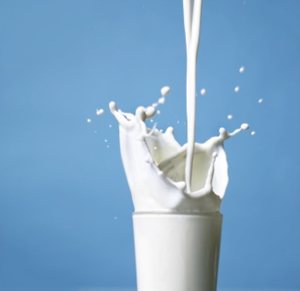From the what-else-is-in-food file, the Brisbane Times reports that permeate – a watery, greenish waste product from the production of cheese – forms up to 16 per cent of the fresh milk in Australia according to documents obtained by the Herald.
The story isn’t new; check out this video from an Australian TV show in May 2008 (see below).
The story has all the elements of pink slime: a food additive that appears safe, but has s yuck factor; corporate misrepresentation (dude, it’s not milk) consumer outrage at not being told; and an industry  deferring to government standards (the lowest kind), clueless about communication with its own snappy catchphrase — a rich source of dairy carbohydrate — and deep in denial about public disclosure.
deferring to government standards (the lowest kind), clueless about communication with its own snappy catchphrase — a rich source of dairy carbohydrate — and deep in denial about public disclosure.
As the milk wars between supermarkets have reduced margins for milk producers, industry sources say permeate is increasingly being used by producers to reduce the cost per litre.
Just how much permeate – which is cheaper than fresh milk and can be used to moderate fat levels – is used has been a closely held secret of the dairy industry.
In 2008 a number of NSW farmers accused the milk industry of adding up to 12 per cent permeate to milk to cut its production cost.
Internal documents from Australia’s biggest supplier, National Foods – which makes Pura, Big M, Dairy Farmers and supplies both Woolworths and Coles brand milk – reveal its milk now contains up to 16.43 per cent permeate. One document, labeled ”permeate cost savings”, reveals up to $22,960 can be saved by adding 16 per cent permeate to the production of 350,000 litres of whole milk. This shaves almost 16 per cent of the cost off the price of production, and does not have to be disclosed on the label.
In Australia, the food standards code allows producers to dilute milk with "milk components", such as permeate, as long as the total fat level remains at least 3.2 per cent (for full-cream milk) and the protein at least 3 per cent (for any milk). Natural cow’s milk has a fat level of 4 per cent.
There are no known health risks associated with adding permeate to milk.
Not only does its addition to milk reduce costs, but it eliminates the need to dispose of the permeate.
A Dairymark report recommends the industry should change its view of permeate to "a rich source of dairy carbohydrate, rather than a more orthodox view on permeate as a waste stream that is proving problematic in disposal terms."
The chief executive of A2 Milk, Peter Nathan, who said none of his milk contained permeate, described the substance as a "lemony-green liquid substance; it’s certainly not attractive”. He said consumers were "being led to believe that milk they are drinking is pure milk. It’s not".
According to the industry body Dairy Australia, permeate is green in colour because of the Vitamin B in milk.
A Woolworths spokeswoman said: "This is regulated by Food Standards Australia New Zealand. We contract our own brand milk to numerous suppliers around the country and we are confident that they are delivering a product that matches the nutritional panel."
A Coles spokesman said: "Coles brand milk is made to the same high standards as branded milk lines, and in no way has the quality of our milk been altered as a result of our milk price cuts in January 2011."
